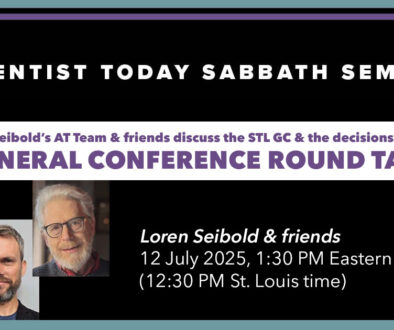Urgent Apocalypticism in Adventism
by Ronald Lawson, Ph.D | 22 November 2018 |
October 22 this year was the 174th anniversary of what Adventists know as “The Great Disappointment.” It also means that Adventists have been proclaiming urgently that Jesus is returning “soon” for 174 years. After that many years, what does “soon” mean? How soon is “soon”? If the delay is the result of the need to complete the “pre-advent judgment” (previously known as “the Investigative Judgment”) this should surely make us wonder about the slow speed of God’s computer equipment compared to what we now have here on earth. If it is the result of the failure of all Christians to take the gospel effectively to the “10-40 North Quadrant,” the huge sweep of population stretching from north Africa through the Middle East, Southern Asia, and many of the former Soviet Republics, to China, Japan and much of Southeast Asia, then this suggests that, given our limited progress there, “soon” will be long indeed.
This paper is named “The Persistence of Urgent Apocalypticism within a Denominationalizing Sect: The Case of Seventh-day Adventism.” In it, I argue that the doctrine that the second coming of Christ is near continues to be affirmed in Adventist creedal statements primarily because church leaders fear that any attempt to update the prophetic teachings of Ellen White would result in unmanageable fallout, and it continues to find expression in evangelistic preaching and writing because it still attracts potential converts. It also reappears as the theme of a quarter’s Sabbath School lessons fairly regularly, as a means of hopefully keeping the expectation alive among church members.
However, as American Adventism has put down roots in society and prospered, and has thus moved from near the sect pole towards the denomination pole of the sect-denomination continuum, the doctrine has lost a great deal of its urgency among many of the members. As one might predict from sociological theory, considerable urgency continues on the fringes of Adventism, among the much more sectarian “independent ministries.” These continue to attract a following because of the frustration of first generation members, who were initially attracted to Adventism by its apocalyptic message, because they find when they attend many Adventist churches, especially in the developed world, that the doctrine has been de-emphasized in the preaching there.
Read the article at RonaldLawson.net. It was originally published in modified form as “The Persistence of Urgent Apocalypticism within a Denominationalizing Sect: The Apocalyptic Fringe Groups of Seventh-day Adventism.” Thomas Robbins and Susan J. Palmer (eds), Millennium, Messiahs and Mayhem (New York: Routledge, 1997), 207-228.
 Ronald Lawson is a lifelong Seventh-day Adventist, and a sociologist studying urban conflicts and sectarian religions. He is retired from Queens College, CUNY, and now lives and works in Asheville, NC.
Ronald Lawson is a lifelong Seventh-day Adventist, and a sociologist studying urban conflicts and sectarian religions. He is retired from Queens College, CUNY, and now lives and works in Asheville, NC.




